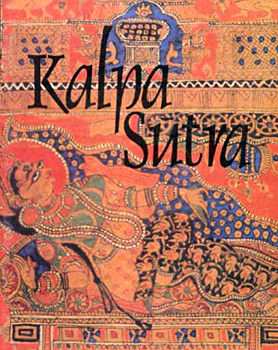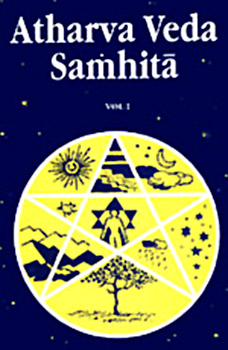 Caste system in ancient India is defined as the hierarchical order of the social structure. The origin of caste system in ancient India and how it was conceived is not very clear. The earliest reference to it is found in the Rig Veda. It represents the hierarchy of castes - the Brahmins occupying the topmost position and the rest namely Kshatriya, Vaishya and Sudras coming in descending order. From this it has been concluded that the Sudra caste was born out of the union of Aryans and non-Aryans. In this connection, it can be said that reference to caste system in ancient India occurs in the tenth book of the Rig Veda. It is however not clear whether or not the castes had been hereditary ever since their inception. The Bhagavad-Gita is, perhaps, the earliest work to refer to the origin of castes in accordance with the qualities and occupations of the members of the respective castes. In the post Vedic times, however, the caste-system became rigid and hereditary.
Caste system in ancient India is defined as the hierarchical order of the social structure. The origin of caste system in ancient India and how it was conceived is not very clear. The earliest reference to it is found in the Rig Veda. It represents the hierarchy of castes - the Brahmins occupying the topmost position and the rest namely Kshatriya, Vaishya and Sudras coming in descending order. From this it has been concluded that the Sudra caste was born out of the union of Aryans and non-Aryans. In this connection, it can be said that reference to caste system in ancient India occurs in the tenth book of the Rig Veda. It is however not clear whether or not the castes had been hereditary ever since their inception. The Bhagavad-Gita is, perhaps, the earliest work to refer to the origin of castes in accordance with the qualities and occupations of the members of the respective castes. In the post Vedic times, however, the caste-system became rigid and hereditary.
Caste System in Vedic Age
Under economic life we have dealt with the occupations of different classes of people. It is needless to repeat them here. What is noteworthy is that there is no distinction between high and low occupations. There is no derogatory reference to the people pursuing occupations other than that of the sacerdotal class. The low position, accorded to people like blacksmiths, tanners, butchers in the Smriti literature, are not found in the Vedas. The term `dasa` seems to be the designation of a section of powerful non-Aryans who used to cause trouble to the Aryans. Dasas are stated to have been wealthy and lived in cities. In Atharva Veda, various classes of people of the society pursuing different vocations can be found. Dasas appear to have been engaged in agriculture.
Caste System in Age of Brahmanas
 The Brahmanas confirm the fact that Sudras were called dasas. Those among them who did not surrender to the Aryans were termed dasyus (robbers). In the Brahmanas it has been found that Sudras were servants by occupation and that he could be ejected from a place or even slain at will. From this it appeared that he was completely at the mercy of the upper classes, and had no security in respect of property or life. It is curious that most of the Brahmanas leave out Sudra from accounts of the origin of castes. The various social disabilities of Sudras include their entrance into the place where sacrifices were performed. It is interesting to note that there are evidences, in the Brahmanas, to prove that the castes were not rigidly hereditary. Even a member of the low class could be elevated to the highest caste by dint of his special qualities and learning. It can be concluded that intellectual or spiritual attainments sometimes outweighed heredity in determining the caste of a person. As people of the lower classes were elevated to higher ranks for exceptional qualities, so those of the higher strata were relegated to lower ranks for heinous acts. The study of the Veda and the performance of Vedic sacrifices were denied to Sudras.
The Brahmanas confirm the fact that Sudras were called dasas. Those among them who did not surrender to the Aryans were termed dasyus (robbers). In the Brahmanas it has been found that Sudras were servants by occupation and that he could be ejected from a place or even slain at will. From this it appeared that he was completely at the mercy of the upper classes, and had no security in respect of property or life. It is curious that most of the Brahmanas leave out Sudra from accounts of the origin of castes. The various social disabilities of Sudras include their entrance into the place where sacrifices were performed. It is interesting to note that there are evidences, in the Brahmanas, to prove that the castes were not rigidly hereditary. Even a member of the low class could be elevated to the highest caste by dint of his special qualities and learning. It can be concluded that intellectual or spiritual attainments sometimes outweighed heredity in determining the caste of a person. As people of the lower classes were elevated to higher ranks for exceptional qualities, so those of the higher strata were relegated to lower ranks for heinous acts. The study of the Veda and the performance of Vedic sacrifices were denied to Sudras.
Kalpasutra states the disabilities of Sudras. According to these works they had no right to Vedic study. In their sacrifices, the recitation of Vedic mantras was forbidden. All Samskaras were prohibited for them. A particular section of Sudras had to live outside the village; because Vedic study was prohibited for a Brahmana living in the same village with them. However, in comparison with the earlier ages, the Kalpasutras appear to have allowed certain privileges to Sudras. In some sacrifices, the participation of Sudras was essential. Sudras also had the right to obtain property by all valid modes of acquirement. From the picture of the society, reflected in the Kalpasutras, it is clear that Sudras were not a class of slaves without any right to property or security of life. In the Kalpasutras, Sudra signifies not merely the fourth caste, but also includes various sub-castes. According to Dharma sutras the sub-castes owed their origin to inter-marriages of Sudras with the upper classes.
Caste System in Age of Epics
In the Ramayana, Sudras appear as labourers and domestic servants. They are subject to certain disabilities, for instance ineligibility for Vedic study, performance of sacrifice, etc. In certain portions of this epic, regarded as genuine, caste system does not appear to have been severely fixed by inheritance. A man of a lower caste, by impression of severe self-discipline, could attain the status of a higher caste. A number of sub-castes have been mentioned in the Mahabharata. The members of four castes were no doubt barred from inter-marriage, inter-dining and other intimate associations with these people.
Further, in Smriti sashtra too many references to Sudras and the various disabilities and derogatory treatment they were subjected to can be found. Some works in Sanskrit literature refers to people beyond the pale of the four castes. The Jatakas throw considerable light on the position of low-class people and they also testify to the fact that even low-class people were allowed to resort to mendicancy.



















